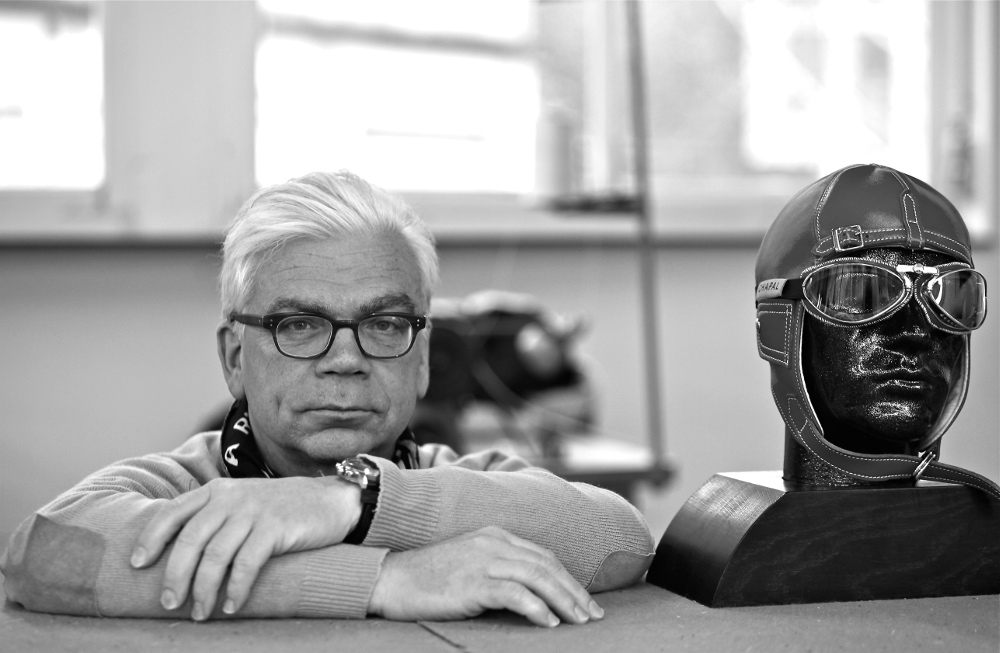Since its creation, CHAPAL has built a craftsmanship empire. A symbol of luxury and excellence, the Maison chooses to produce all of its pieces in its own workshops in France. This totally integrated manufacture is the foundation of the brand. Over the years, the brand has consistently sought to attain perfection through a meticulous and rare production. Thus, every day, a few dozen magic hands display exceptional know-how and ancestral traditions specific to the French Couture.
The secret of the golden hands
The CHAPAL manufacturing process brings character but also irregularities to the finished product. The imperfections of the raw material is what gives the finished products a personality, that is qualified as artisanal.
Since 1832, 90% of people working at CHAPAL are artisans: tanners, dyers, cutters, seamstresses … The essence of CHAPAL is to master the entire production, avoiding subcontracting even in new techniques like the manufacture of shoes, helmets, or jeans. It is therefore normal that the products leave the workshops feeling genuine, authentic.
For example, to manufacture the CHAPAL 1914 leather jacket, you will need: 12 skins of sheep from the Causses, a slightly mountainous area in the centre of France where the animals must walk hard to feed themselves. This gives the leather a natural firmness. The tanning then takes place in large tanks where the wool is separated from the leather. The skins are stripped, soaked in acid baths called “pickle”. Once taken out of the baths, they are laid down several days, even weeks. The skins are then tanned and stabilized with chrome or vegetable dye, and they become leather.
« It is sometimes necessary to know how to retain fundamental values and to seek in a realization the beautiful and the well-made. That’s why I like the word artisan that comes from the word art… It expresses an idea of freedom, of independence and of a job well done. »
The leather is then worked to clean the flesh part called “velvet”. The “flower” side is smoothed to give it its shine. For dyeing, the leather is immersed in barrels of water, dye and nutrients. Dried, it is again worked on machines that flattens it, sand the flower and polish it. For some items, the leather can be plasticized or dyed with a spray gun. The leather is then sorted according to hue and thickness.
The 32 elements composing the 1914 jacket are then hand-cut. They are arranged on the skins according to the grain of the leather and its hue. A mark, a darker sheen or a scar are details that make the jacket unique. The 220 grams cotton gabardine lining is cut with a chisel. It’s the mechanic’s turn to intervene. She checks if all the pieces of leather have been notched and then places a strip of thermobonding lining around the edges of each leather piece to stiffen the seams, make the pocket openings and assemble the lining. The 32 pieces of leather are assembled with a sewing machine. The peculiarity of this work is that they are sewn upside down. The thread is made of 50% polyester for strength and 50% cotton for its natural appearance. 40 meters of yarn are needed to make the 1914 jacket. The assembly of this jacket alone takes approximately 8 hours, a full day’s work.
An initial inspection is performed as the buttons are sewn: 6 horn buttons for the jacket, 8 resin buttons for the detachable collar. The final inspection is an extremely important task: the person who chose the skins to make the jacket will control the finished product, give it its patina, iron it, rub the seams and sign the exit ticket. The jacket is then ready to be shipped to its new owner somewhere on the planet.
Chapal Racing Collection
Chapal x Paul Belmondo
Brooklyn Vibes Atmosphere
SHOWROOM Jean-François Bardinon – by appointment
Just push the door to number 244, rue de Rivoli and climb a few steps to this Haussmann apartment and be transported into the world of Maison CHAPAL. A refined setting in the heart of Paris and close to the legendary fashion district.
By appointment only. 244 rue de Rivoli 75001 Paris FRANCE
Report by chapal.fr













